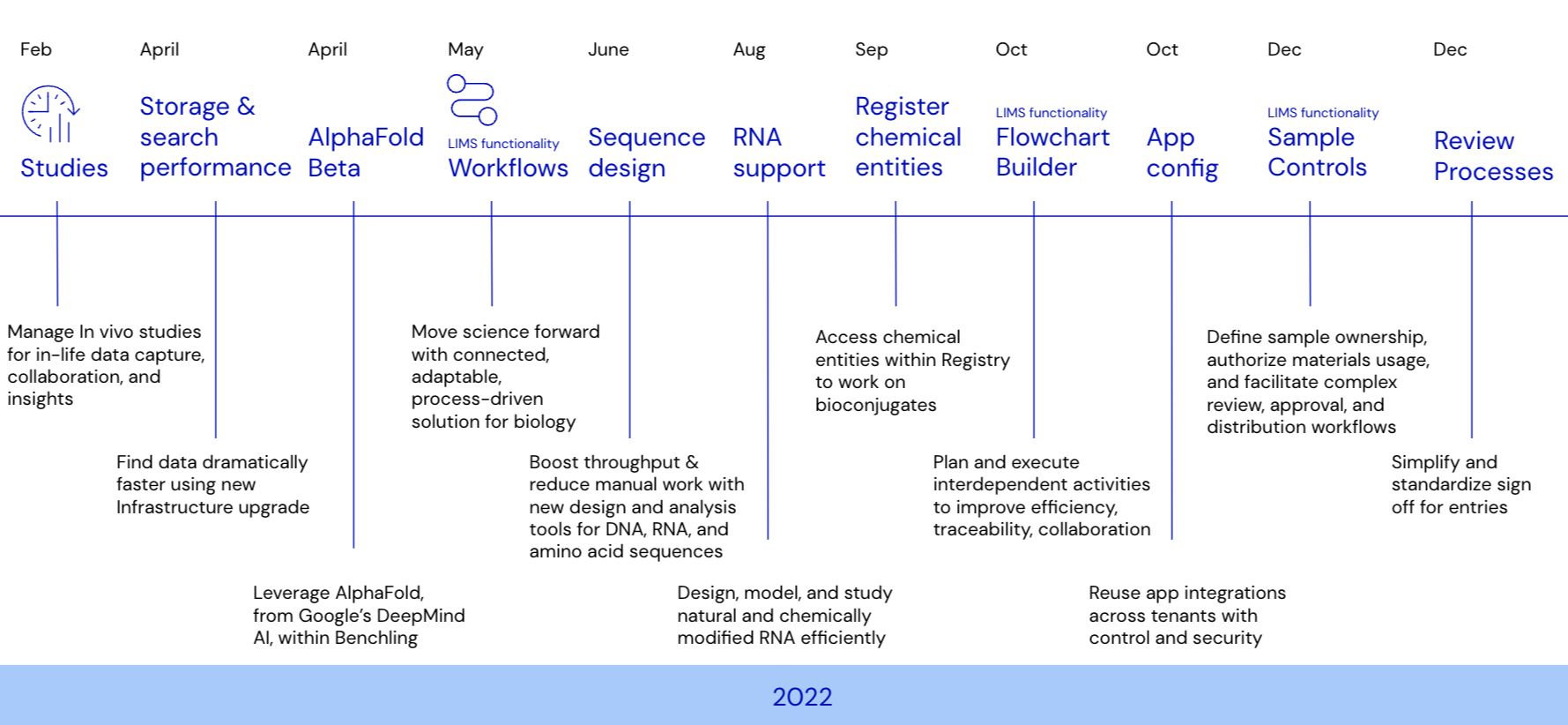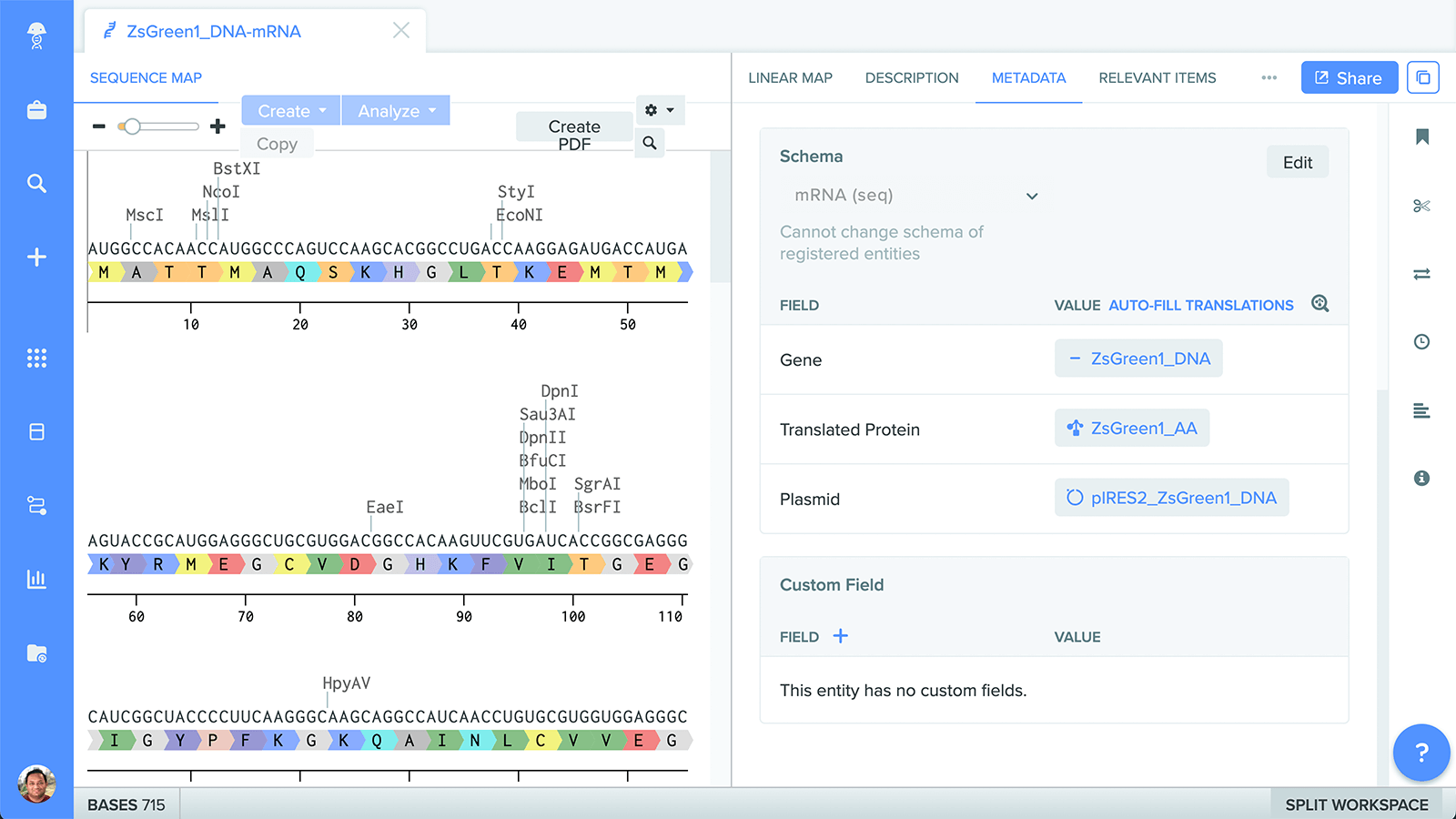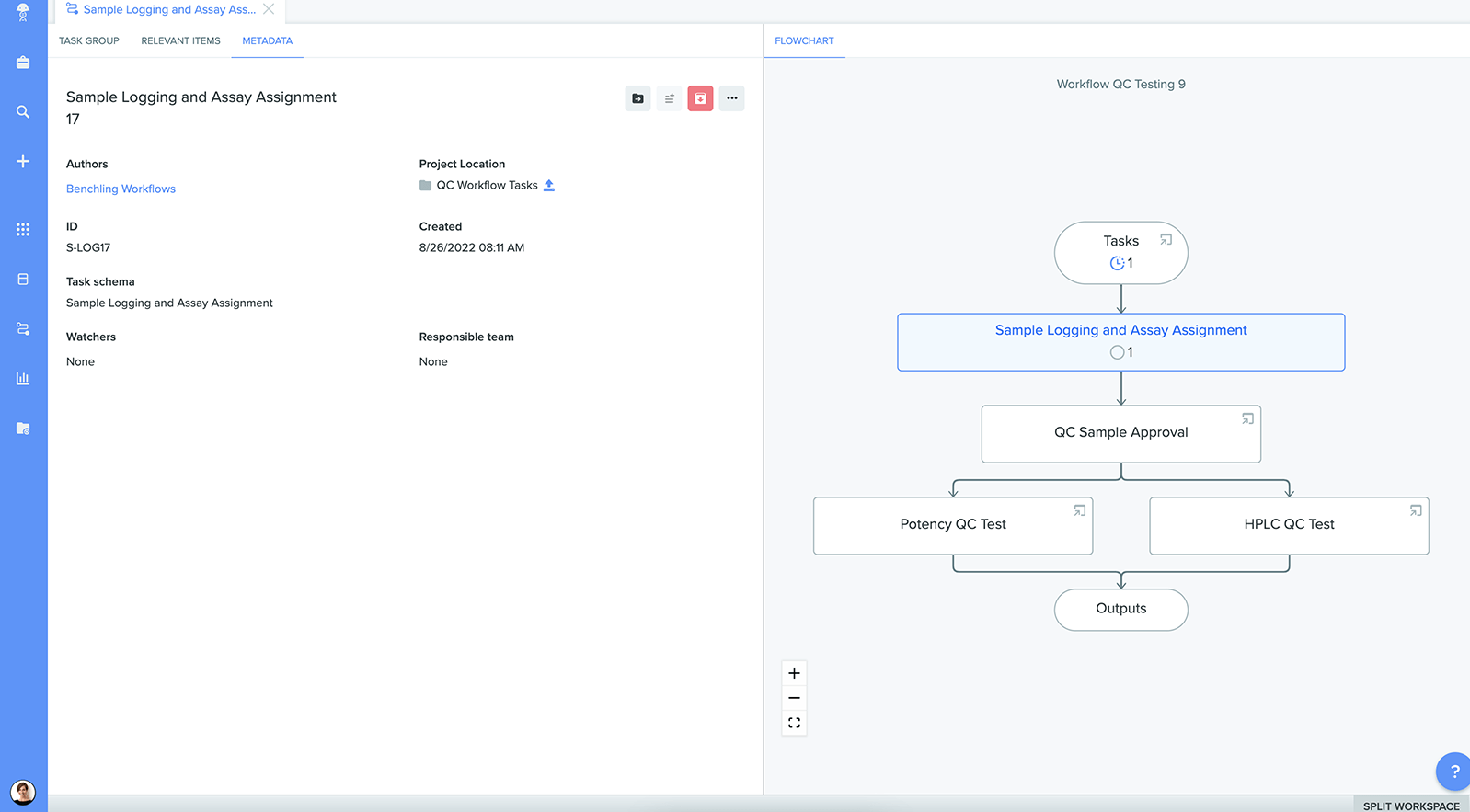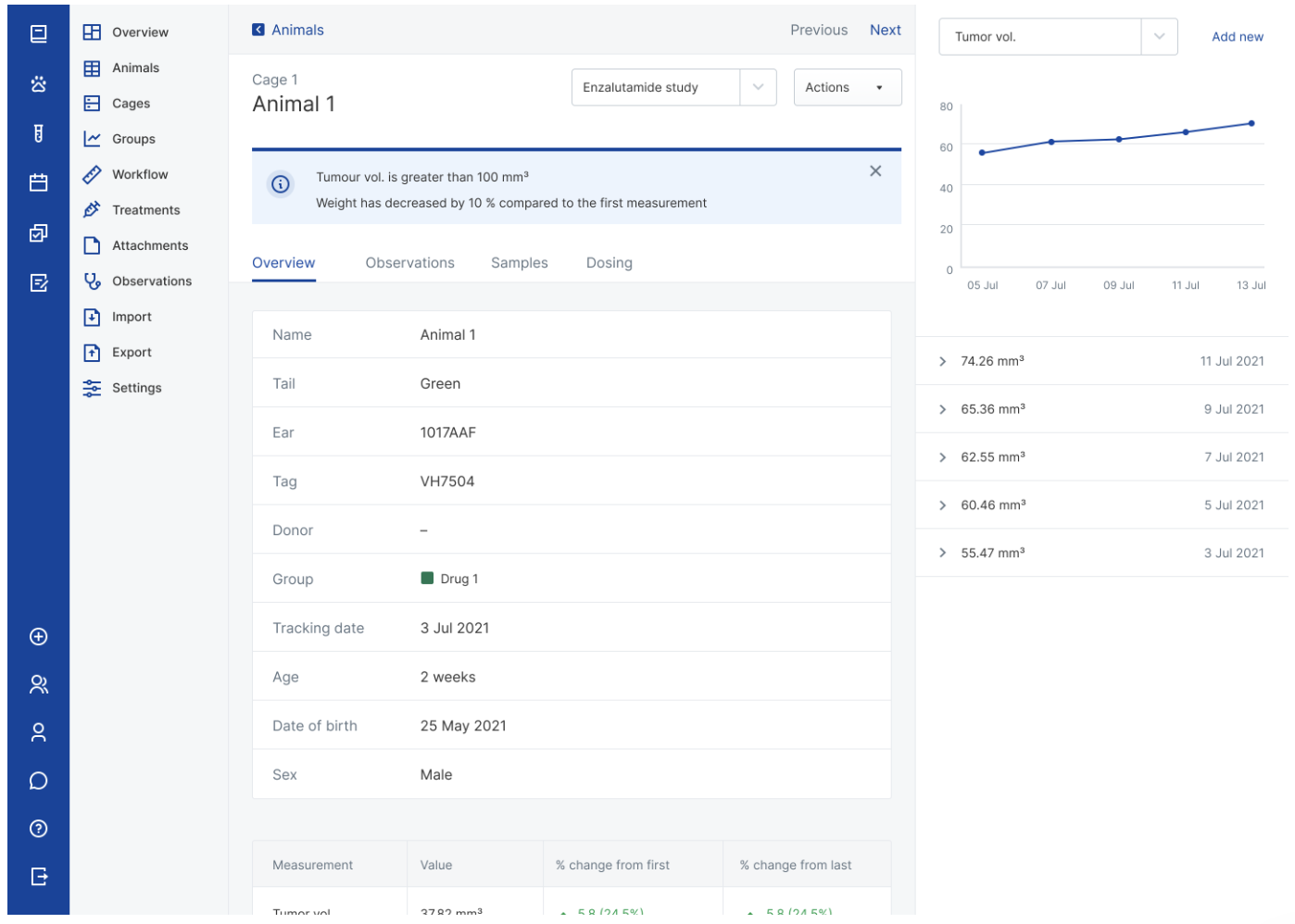2022 — Benchling Product Year in Review

While 2022 wasn’t the year in biotech that anyone expected, it was the year where the industry demonstrated tremendous perseverance. In the face of a turbulent macroeconomic environment, biotech companies continued to make breakthrough discoveries and advance their programs. Benchling is in awe of our customers’ accomplishments during this particular year.
The Benchling team has also been busy in 2022. Cresting our 10 year anniversary as a SaaS company, Benchling also passed the 1,000 customer milestone. Our product innovation delivered even richer support for existing use cases while also broadening the type of work that can be done in the platform. We launched two new applications — Studies and Workflows — and released over 40 significant features. These include tools to design complex and conjugated biomolecules to functionality that expedites early development processes and integrating in vivo studies.
Below is a resource round-up of some of these new capabilities. If you’re interested in learning even more about how to take advantage of these capabilities, your Benchling Customer Success Manager is always eager to help. Please reach out to them directly or email the team at customersuccess@benchling.com.

Design and model novel biomolecules
The industry is expanding with a growing focus in novel biomolecules from multi-functional antibodies to all types of RNA modalities and complex conjugates. This quarter Benchling launched many capabilities to further advance this next-gen science.
RNA Therapeutics solution
Benchling R&D Cloud now provides the best-in-class design and visualization tools for mRNA and RNA sequences, with or without chemical modifications. With Benchling’s complete end-to-end solution, RNA R&D teams can take advantage of new:
RNA sequence entity support – Includes annotations, translations, primers, feature libraries
Visual editor – View RNA sequences holistically
Universal search for RNA entities – RNA sequence analysis tools for biochemical properties calculations, alignments, and parts

Sequence design updates
In addition to designing and analyzing RNA sequences, as highlighted above, scientists can now boost throughput and reduce manual work with new design and analysis tools for DNA and amino acid sequences in Benchling with:
Sequence confirmation in bulk – Set up DNA alignments in batches to increase throughput of the sequence confirmation workflow and minimize repetitive and tedious activities.
Ensembl genomic data search – Get access to all Ensembl data, including all sequence types and across all Ensembl genomes, with a few keystrokes.
Molecular biology workflows – Automate molecular biology workflows with a wide range of REST APIs for creating, updating, and managing sequence data.
Chemical entity registration
With the new “Molecule entity” option in Benchling Registry, scientists now also register and model small molecules with supporting functionality:
Small molecule sketch tool – Draw chemical structures with MarvinJS.
Physico-chemical properties calculation – Benchling Registry can now automatically calculate common physico-chemical properties of small molecules such as MW, Log P, and TPSA and display the information alongside the registered small molecule.
SMILES – Use simplified molecular-input line-entry system (SMILES) in Registration tables and enforce basic chemical structure uniqueness constraints based on canonical SMILES.
Universal search – Benchling is now more powerful and can search for biomolecules and small molecules from the same interface. Scientists can perform advanced substructure and similarity searches against molecule entities.
AlphaFold 3D protein structure prediction
Researchers can access AlphaFold’s DeepMIND AI algorithms to predict 3D structures of novel proteins through Benchling. This is currently a limited beta program, although curious and eager scientists should keep an eye out for a broader rollout of AlphaFold access within Benchling in 2023.
Move science forward with Biology’s Modern LIMS
Benchling unveiled a whole new approach to LIMS, answering the deep unmet need from many R&D teams for a better solution to manage samples and process-driven work serving biology’s unique needs. Research, analytical, bioanalytical, and process development teams can work together to get breakthrough molecules to milestones faster for both non-GxP and GxP compliant workflows.
Benchling’s LIMS is particularly valuable to teams seeking to optimize handoffs, streamline and connect sample management, and work efficiently while ensuring compliance and data integrity. Benchling’s LIMS makes it easier to collate, view, and share operational and scientific insights. It is also much easier for R&D and IT teams to manage as it has been designed to connect to a broader tech ecosystem, is adaptable over time as processes evolve, and provides a modern interface.
Watch the LIMS webinar on-demand

New Workflows application
Benchling’s newest application, Workflows, transforms Benchling from a system of record into an engine of collaboration and insights. Workflows connects lab activities from straightforward requests to orchestrating activities across the R&D lifecycle. Labs managers can schedule experiments, assays, and runs for faster, more insightful results. And teams can optimize end-to-end workflows with effective resource and inventory management. Workflows makes this possible with:
Workflows design tools – Flowchart Builder is designed for process managers to plan, visualize, and execute interdependent activities
Workflows manager – Functionality to initiate, manage, and optimize tasks within a workflow
Dashboards and notifications – Progress tracking, notifications, and ability to create operational reports to optimize processes

Sample controls and sample search
As a sample-centric solution, Benchling LIMS also delivered better and more compliant sample management. New controls define sample ownership, authorize materials usage, and facilitate complex review, approval, and distribution workflows using the Workflows application.
To provide more detailed and contextual search results, sample location and attributes are collated for additional context. Users can now find relevant locations and attributes of samples across all registered inventory, further increasing productivity and collaboration among teams.
Scale collaboration across teams and ecosystems
Improving how productively teams can work together with shared data is a core tenant of the Benchling R&D Cloud. In 2022 we continued to deliver a range of functionality to increase the speed and ease of collaborating.
New Studies application
Running in vivo studies requires a complex mix of study startup, animal management, data collection, and sample analysis. While the teams directly responsible for study management often identify with this role, the work actually spans multiple R&D teams.
To support the work of in vivo studies and connect across all relevant teams, Benchling began to offer the new Studies application to guide in vivo R&D teams through the end-to-end process of study management. Protocol templates help establish repeatable study designs, while intelligent multi-parametric randomization reduces selection bias when bringing animals into a study cohort. In-life data collection is supported by integrated devices, such as balances and calipers, to improve accuracy and reduce repetitive tasks. Real-time graphs, survival plots, and alerts help keep study teams informed and ready to respond.
Teams can perform routine health checks on animals using a configurable set of clinical observations. This provides additional context to the data and enhances animal welfare by spotting key indicators earlier.

Improved storage and search performance
Benchling can now ingest large volumes of data up to seven times faster with new-and-improved results storage in Benchling. Now, teams can seamlessly scale data storage to billions of results while increasing throughput and accelerating work. As teams generate more and more data while products move from research to development, this functionality makes storing and ingesting this information easy and fast.
More powerful search functionality in Benchling drastically accelerates searches, even within the largest data sets. Now, teams can quickly find and use the data they need, whether they’re searching through dozens of records or hundreds of millions. Combined with improved data storage, this search functionality facilitates faster information sharing across organizations.
App configuration
App developers can now make a list of configuration parameters for admins to complete when installing the app, ensuring that developers can re-use an app across multiple tenants without having to rewrite it. Additionally, admins can update app behaviors, like changing the folder where an app stores data, without needing an engineering team to make any code changes. The installation flow for apps has also been improved.
Review processes
Teams can now simplify and standardize sign off for Notebook entries. This review process could be as straightforward as single, author-based reviews of one’s own work to more complex, multi-stage reviews. The multi-stage review capability also fulfills a critical compliance need to manage multiple types of required signatures.
Powering breakthroughs for over 1,300 biotechnology companies, from startups to Fortune 500s


